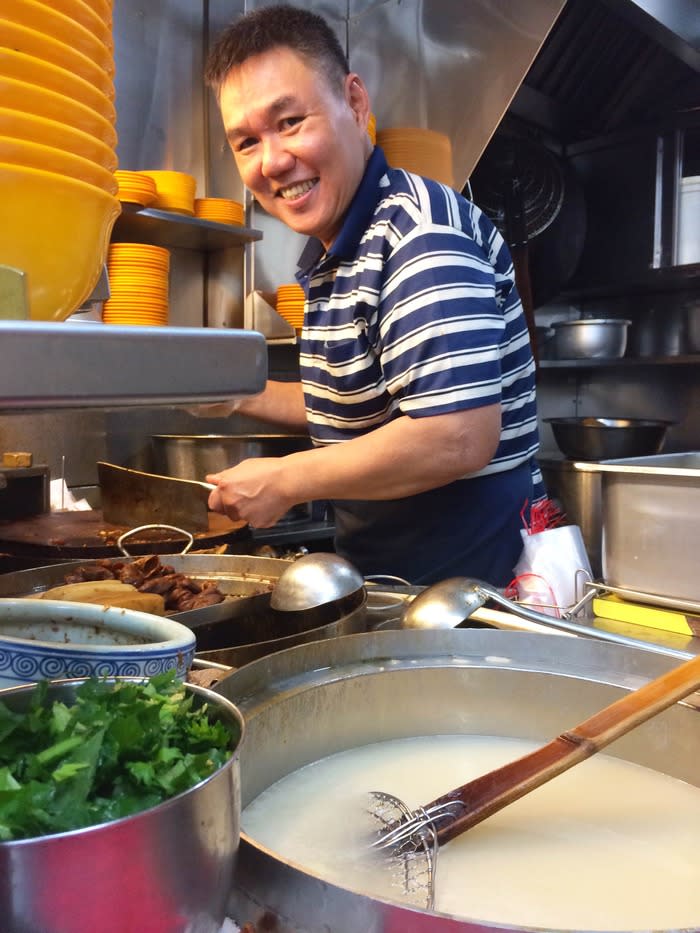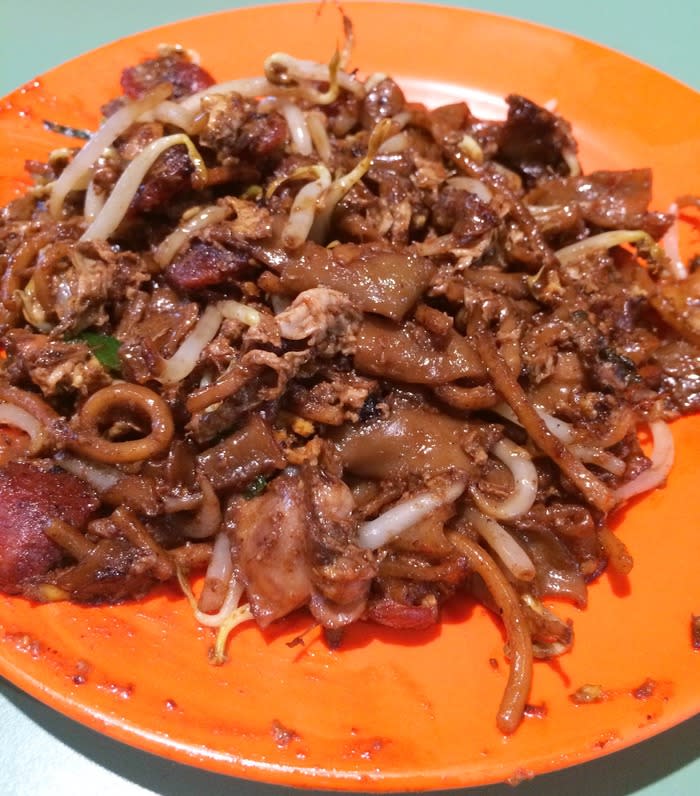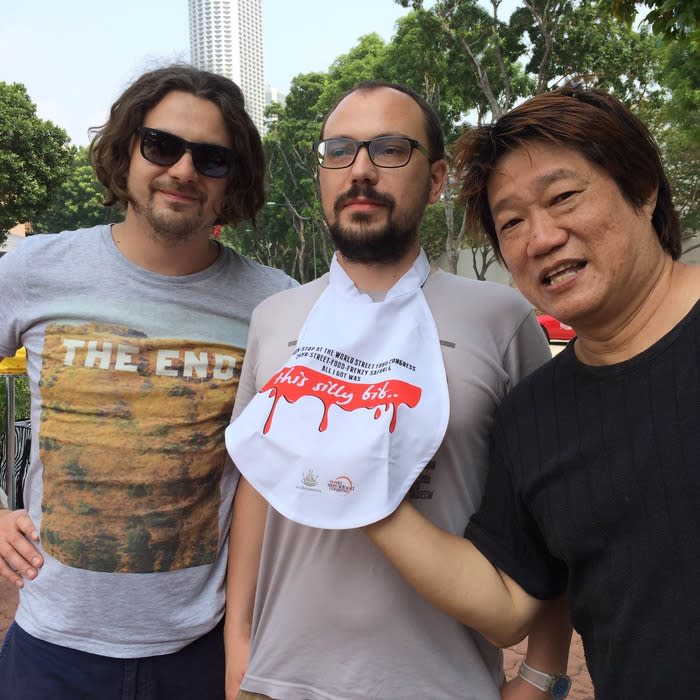Having a blast at Singapore's 24-hour street food safari
Upon receiving an invitation to join about 20 other journalists from all over the world and eat street foods for 24 hours straight, I had to double check to make sure I'd read correctly.
Amazingly, I had it right, and so began the wait for D-day to arrive, when I could take part in the world's first-ever 24-hour street food rally.
The meeting point was at Singapore's Makan Sutra Gluttons Bay at Esplanade.
When I arrived, the day was already warm and humid, with thin clouds painting the sky white. Several attendees had already arrived and we mingled excitedly.
A friendly staff member in a red polo written with the words, "Will Work for Food Culture", handed me a black bag. Smiling, she said, "This is your survival kit."
Inside were many items, including a traditional fan made from woven coconut leaves, wet wipes, a new toothbrush and tube of toothpaste, notebooks, ointment, some refreshing mint candy, utensils, a double-function plate-to-bowl tupperware and medicine to relieve heartburn and indigestion.
The bag of goodies made my excitement rise even higher, but I still didn't really know what to expect; the invitation had not been accompanied by a detailed itinerary, perhaps to provide an element of surprise.
Finally, we got on the bus and our 24-hour food safari officially began.
The event was organized by Makan Sutra, a Singapore-based company founded by KF Seetoh, who has been described by the New York Times' as a "Food Guide Maven". Makan Sutra strives to celebrate food culture and the event was promoted as a kind of kickstarter for next year's World Street Food Congress (WSFC), which will be held in April 2015.
After our first stop at a hawker center in the Toa Payoh area, where we savored one of the city's first (and best) carrot cakes, KF Seetoh explained that street food had fed the world's population for centuries.
"Street food is good for the economy and community. During crisis, many restaurant businesses close down, but street food still thrives. In Singapore, for less than SG$5 meal, you can get a meal at a hawker center. So eating out has become the culture instead of eating in. These hawker centers have brought people together," said Seetoh.
He explained that street foods have stories to go beyond the mere pampering of taste buds. Street food embodies histories of migration, acculturation, cultural mixing and the settling into new places. It captures place's heritage, stamping its "soul" into its food.
Seetoh acknowledged, however, he was worried about the future of street food.
"Now people eat, take a really nice photo and blog about it or post it on social media. Everybody is doing it but, the question is, who is going to cook your grandchildren a plate of chicken rice?" Seetoh said, pointing out that many established street food chefs had failed to transfer their cooking skills to the next generation.
"At many of the street foods stalls I have seen, they [chefs] possess insane artisanal cooking skills, preparing foods with the speed of a machine! It is an art of its own. And this kind of thing needs to be passed down and taught," he added.
Among the many stalls we visited, Makan Sutra brought us one manned by Douglas, who sells fishball noodle -- a recipe he learned from his grandmother.
Douglas demonstrated his method of rolling fishballs with fish and honey, making them bouncy and tasty and at a rate of some 300 an hour.
"It is very important to get the youngsters to get excited about selling street food. They need to know it is a serious business, worth dreaming and working for," said Seetoh, explaining that many stalls at hawker centers had thrived by specializing in a single dish.
For Seetoh, 24-hour street food is also about spreading comfort-food culture across the globe, inspiring more young "street-food warriors" (a term he uses to describe those who embrace and preserve the culture) and creating the proper spirit ahead of next year's WSFC.
During the trip, we stopped at a number of hawker centers off the tourist trail that served equally hearty meals. We also visited some legendary restaurants and a new and happening eatery helmet populated by young chefs.
Seetoh and the group of invited Singapore food bloggers schooled us on the history of Singapore's cuisine, such as the original chili crab recipe that has become a trademark of the city's cuisine -- a dish that hordes of tourists seek out when visiting "the little red dot".
During the wee hours, when most of us were at our most sleepiest, we were taken to Singapore's famous red-light district, Geylang, to eat at JB Ah Meng Kitchen. There we savored the delicious Chinese fusion dishes that successfully kept the pull of sleep at bay.
Apparently, this particular restaurant, which stays open until 5 a.m., has been visited by famous chefs, including Spanish Michelin Star Chef Ferran Adria who, as the story goes, jokingly received a middle finger when he asked about the restaurant's recipe.
With stories such as this, and with so many interesting delicacies to savor, the 24-hour food safari seemed to whiz by. I began to see how food -- street food especially -- was really about identity. And of course, my belly was sufficiently happy thanks to the small portions we ate at each place.
The next morning, after sampling a laksa (spicy noodle soup) stall at the Woodland hawker center, I talked to Seetoh about Indonesian street food.
The photographer-turned-street food guru and entrepreneur has traveled to many parts of Indonesia, from Medan to Lombok. As would be expected, his trips involved exploring the local cuisines.
He said his most memorable experiences of Indonesian street food were formed at Rumah Makan Barokah, Ajo Ramon in Jakarta and Ceu Mar in Bandung. He said the chicken porridge at Pasar Andir was his favorite dish.
"Your street food should be an icon! It's fantastic! The variety of tastes are amazing!" he praised.
Seetoh also suggested ways to heighten the appeal of Indonesian street food. Creating a hawker center or a more localized street-food hub similar to the one on Jl. Menteng in Jakarta, Seetoh said, would be a way to better control and monitor food safety.
"But the most important [thing] is to make a regulation for food-handling, storage and hygiene. It is important for your government to start regulating and to start issuing licenses based on food-safety standards. I know it is very nostalgic to have them [street food vendors] on the streets organically, but it is not so beautiful when people get food poisoning because of the lack of hygiene," he said.
Read also:









